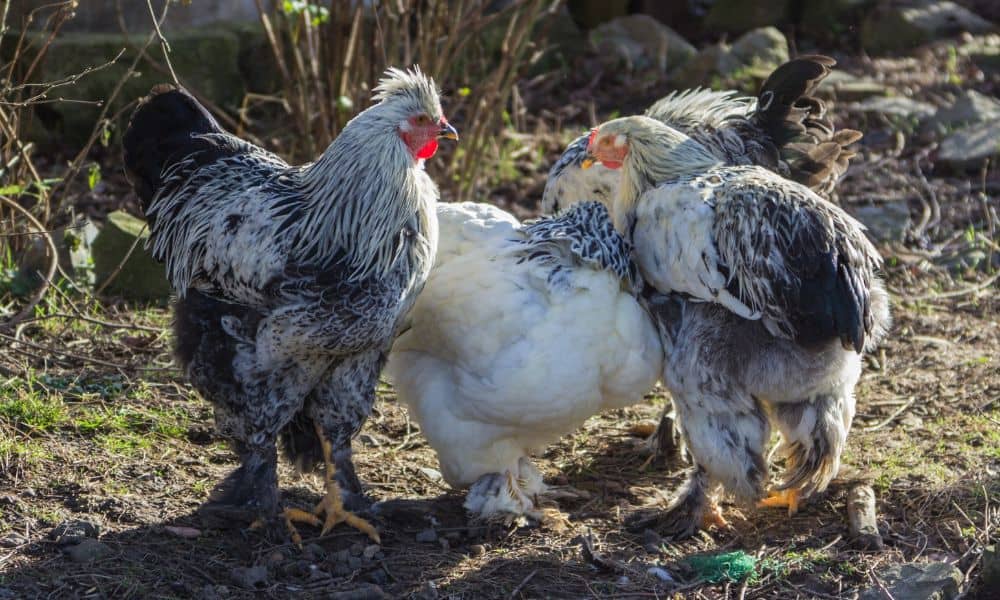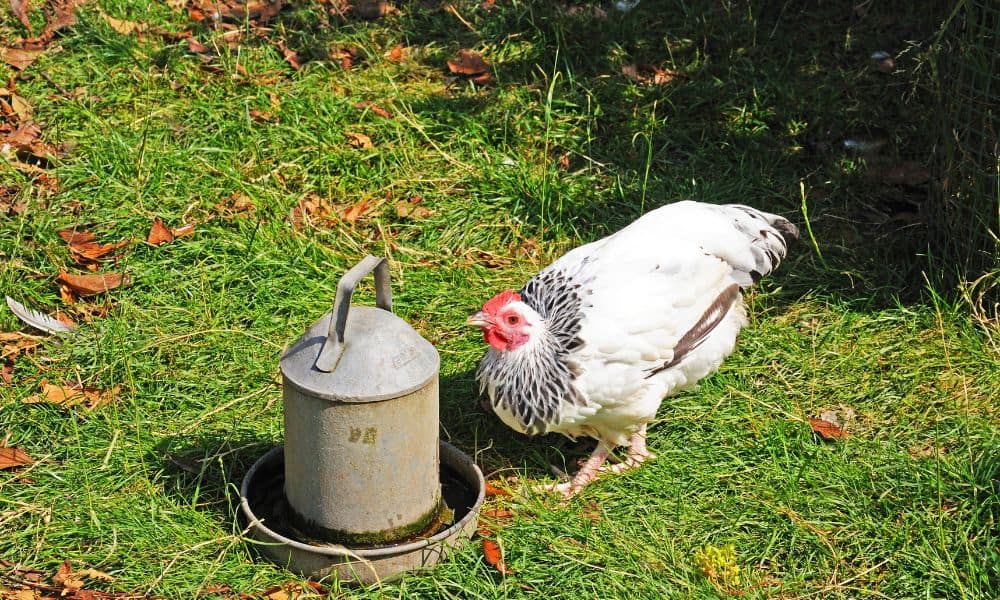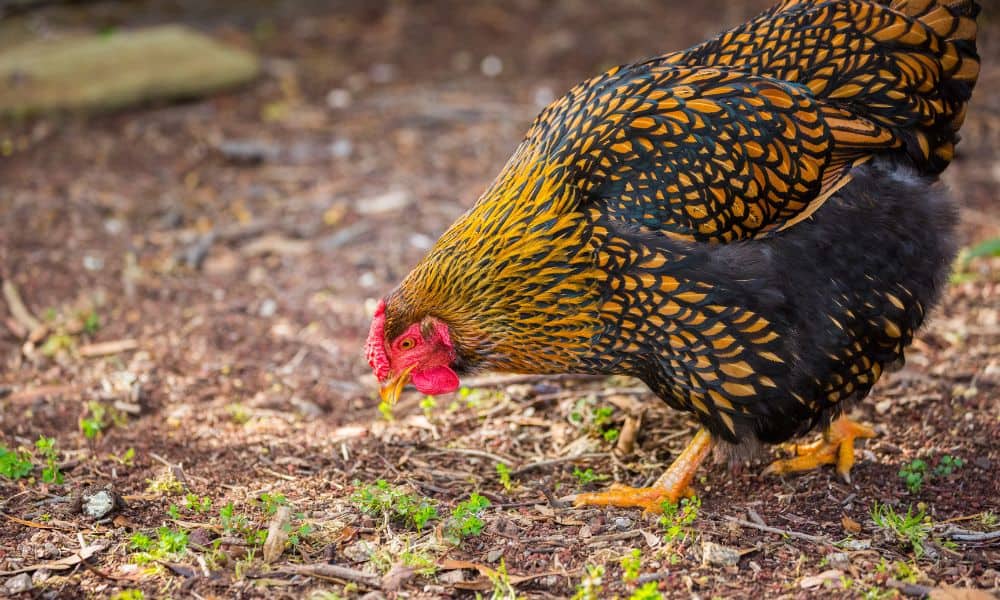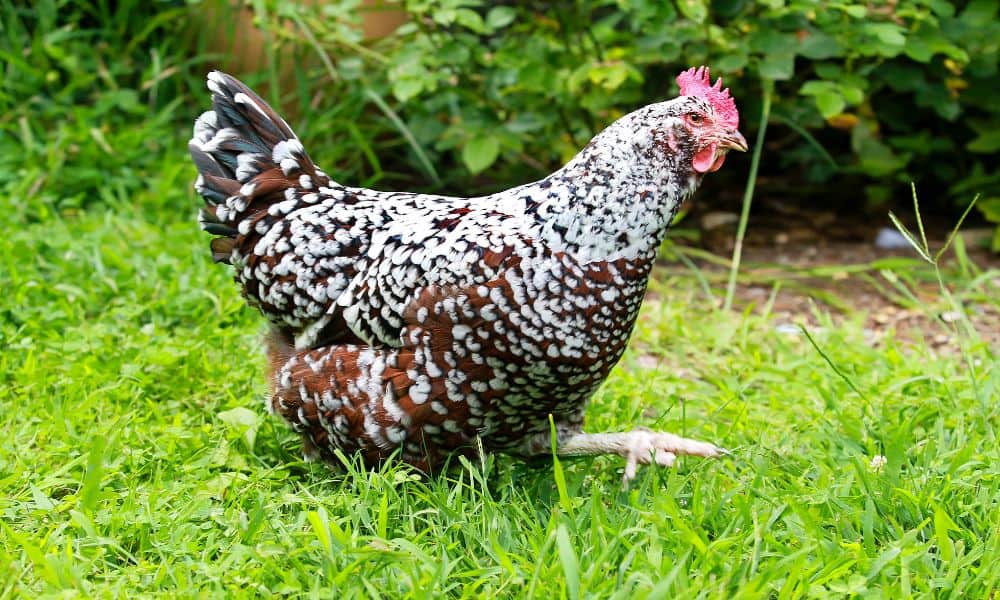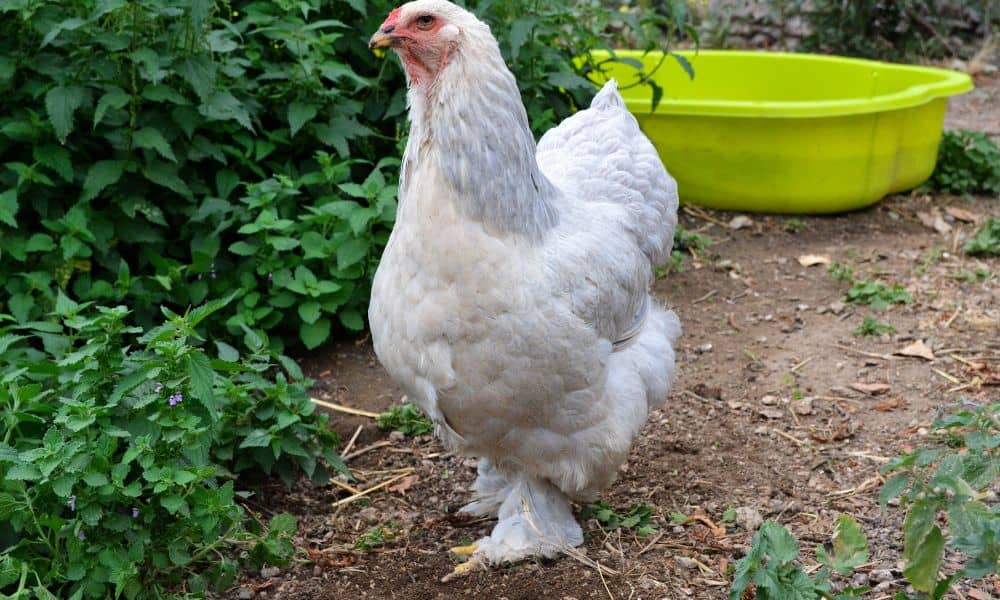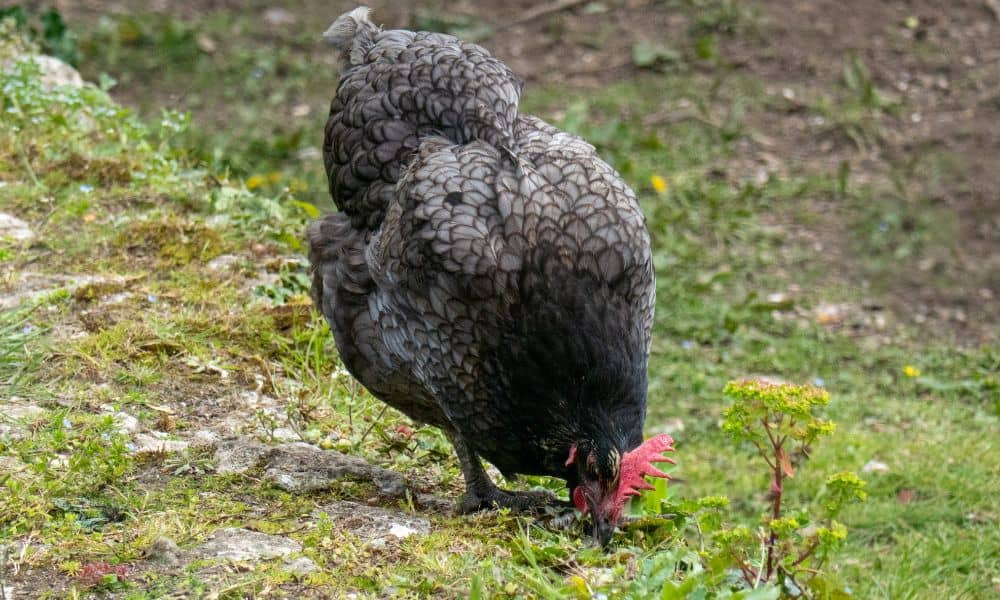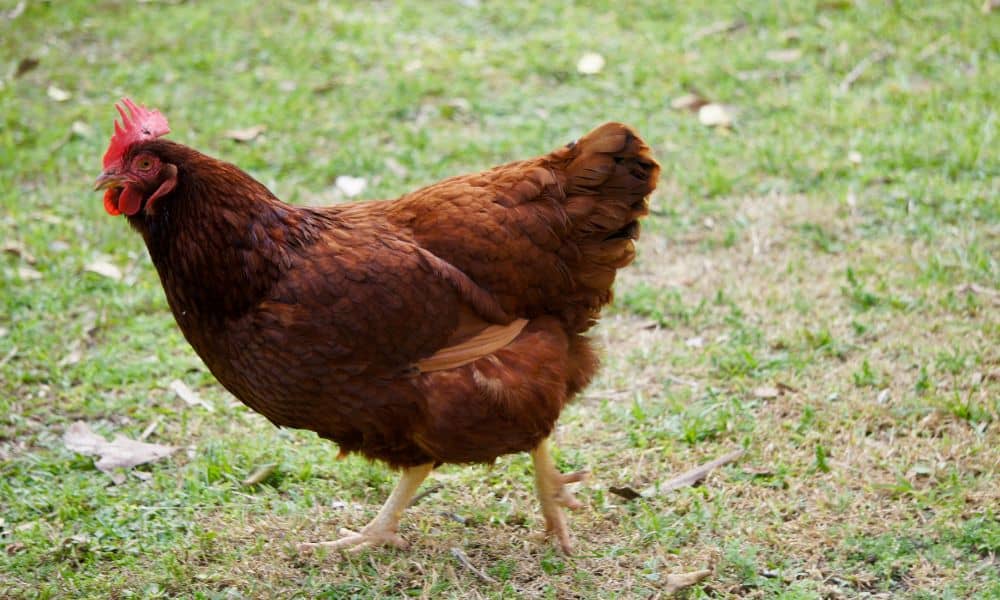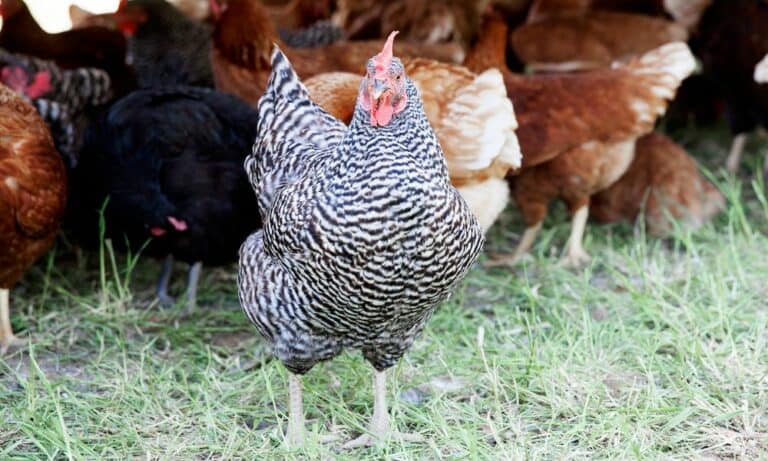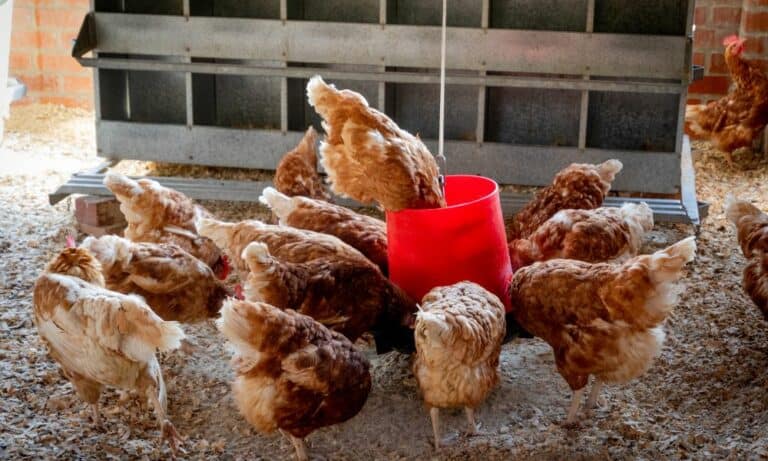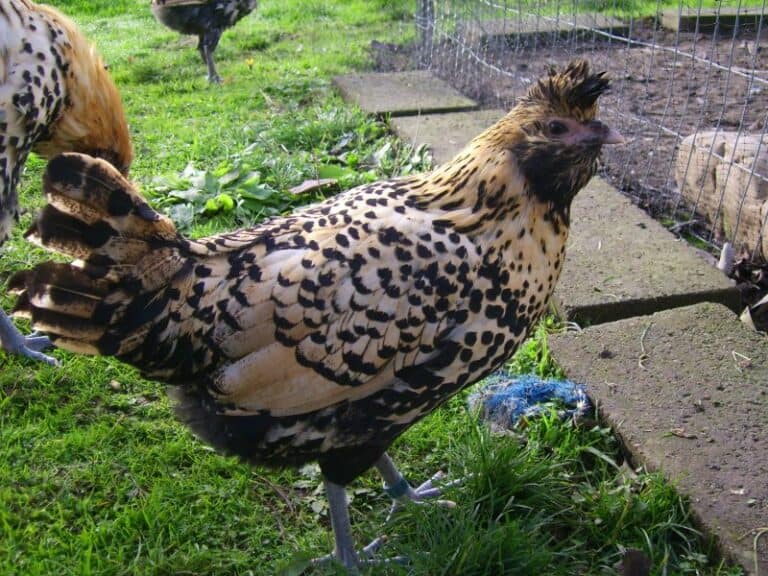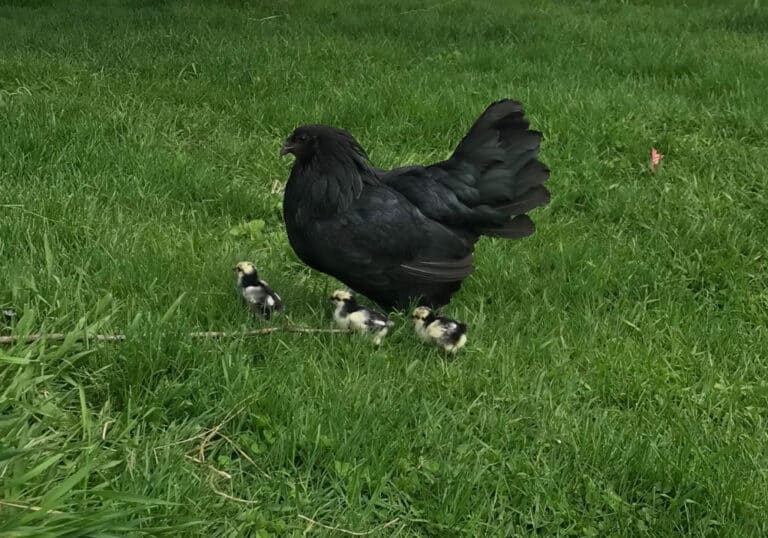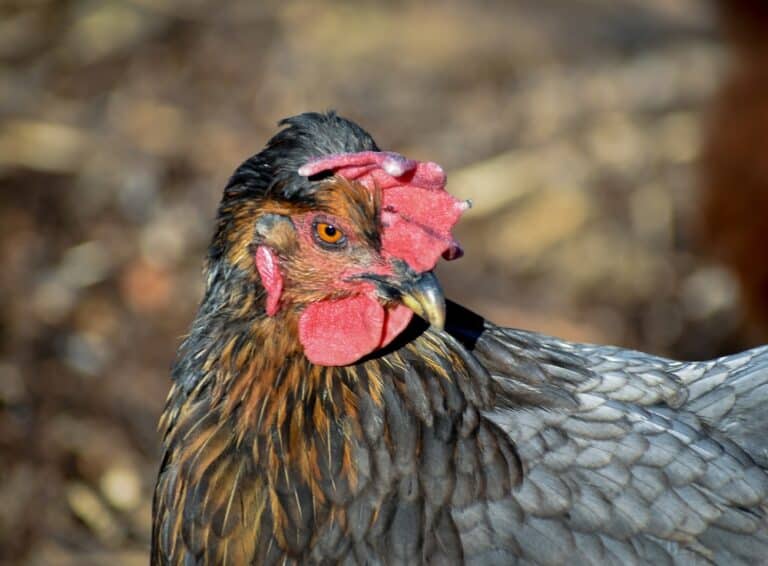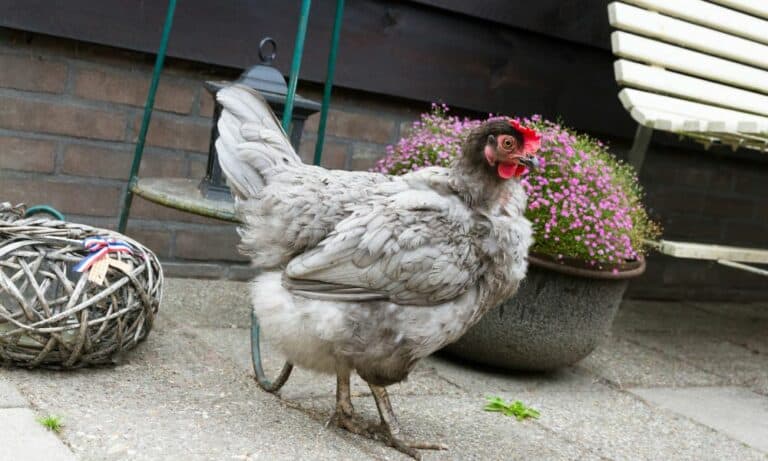If you keep chickens for eggs, you’ll want to choose a good egg-laying breed, while for meat, you’ll be better off choosing a fast-growing, heavy bird.
It’s also possible to have the best of both worlds though – and in this post, we list 12 dual-purpose chicken breeds that can be kept for both meat and eggs.
What are dual-purpose breeds and why would you choose one?
Before we introduce some of the top dual-purpose chicken breeds, let’s take a step back and answer a more basic question – what is a dual-purpose breed?
In the poultry industry, most chickens are bred either for meat or eggs, and breeds that perform well in one area don’t tend to do well in the other.
However, dual-purpose breeds are those that produce a good annual number of eggs but that also grow big enough to be used for meat – and there are many advantages to choosing dual—purpose breeds for the backyard chicken keeper.
First, it means you can use your hens for egg-laying until they become less productive, after which, you can slaughter them for their meat, with younger egg layers taking over their egg-laying duties.
At the same time, you only need to worry about buying one type of feed – because otherwise, you would have to use separate feed for egg layers and broilers – and you won’t need to worry about keeping different flocks separate either.
Not all dual-purpose breeds have the same characteristic though, and when choosing the best one for you, it’s important to take into account several factors.
These include your local climate, your coop type and size, whether they will be free-ranging or kept in a run and how much meat and how many eggs you consume throughout the year.
Then, with these considerations in mind, you can choose the dual-purpose breed that most closely matches your requirements.
So now let’s have a look at some of the options.
Dual-purpose chicken breeds
1. Sussex
The Sussex is one of the oldest British breeds of chicken and is named after the county of Sussex in southeast England.
It comes in several color varieties, three of which are recognized by the American Poultry Association: light, red and speckled.
This breed was originally raised as a heavy meat bird – roosters can weigh up to around 9lbs while hens come in at about 7lbs.
However, hens can lay around 180-200 eggs per year – or sometimes as many as 250 – and they are known to lay well in winter.
The hens are also considered good mothers so are helpful if you want to raise chicks without using an incubator, and roosters are also watchful and good at looking after their flocks.
2. Wyandotte
An American breed, the Wyandotte is named for the indigenous Wyandot people and was created in the 1870s. It exists in many color variations of which the American Poultry Association recognizes nine – while the Entente Européenne lists 30.
Wyandottes can be kept as laying birds that can produce up to 240 large eggs in a year. They are also known to start laying at a younger age than many other breeds. However, they are not a broody breed, so they don’t make good mothers.
With adults weighing around 6-9lbs, they are also good table birds that mature quite quickly and are known for their flavorsome yellow meat.
3. Orpington
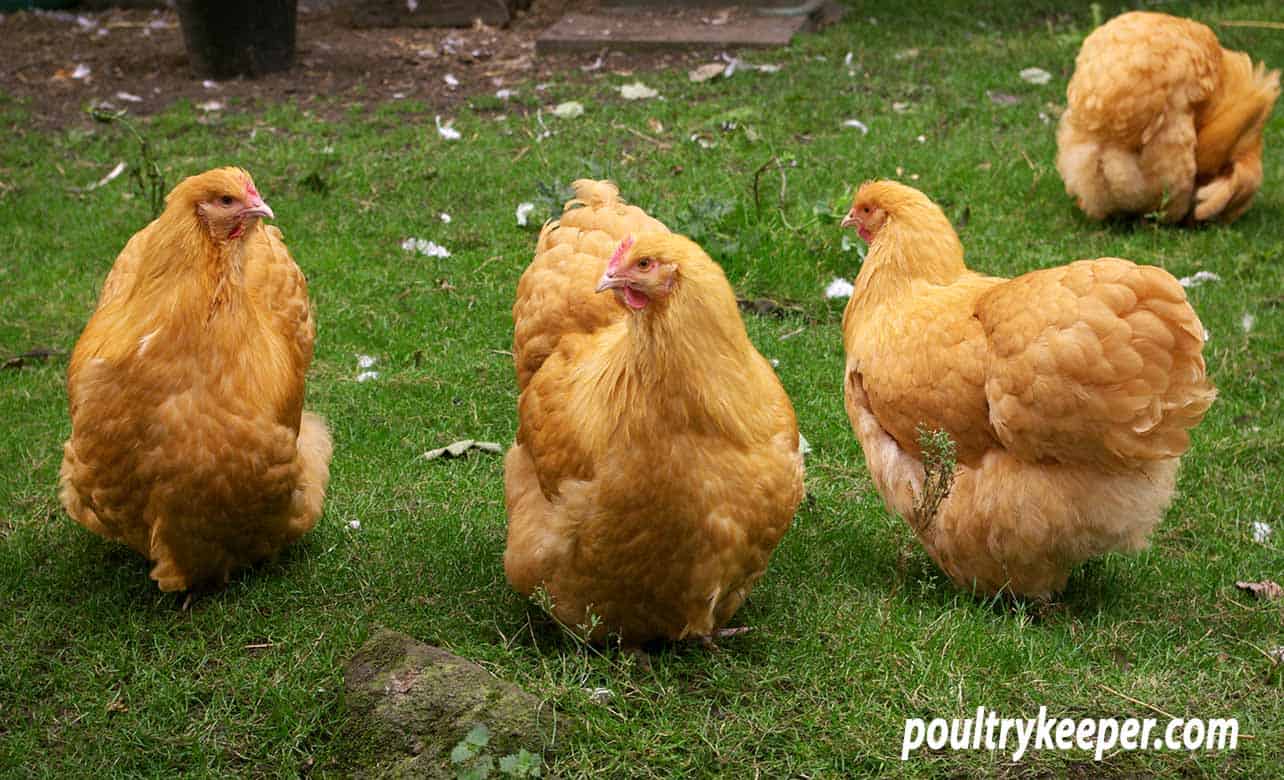
Originally bred primarily as a show bird in Orpington, southeast England, these chickens are an excellent choice if you want a dual-purpose breed.
Usually weighing around 8.5lbs but sometimes reaching as much as 10.5lbs, Orpingtons provide plenty of meat. However, they also lay up to 200 medium to large brown eggs a year, starting at around the age of five to seven months, making them a solid laying breed too.
Orpingtons are known to go broody and are good mothers, making them a good option if you want help raising chicks.
The American Standard recognizes four colors – black, white, buff, blue and splash – although many others exist.
Interestingly, the original black color was selectively bred to hide smog stains from the air in London where they were originally intended to be shown.
4. Plymouth Rock
First bred in Massachusetts in the 19th century, the Plymouth rock went on to become the most widespread chicken variety in the US right up until World War II.
It was listed in the first edition of the American Poultry Association’s American Standard of Perfection in 1874, and today, seven color varieties are recognized in the US – 10 are accepted by the Entente Européenne and five by the Poultry Club of Great Britain.
They are excellent dual-purpose birds that are heavy enough to make a good meat breed but also lay at least 200 large brown eggs each year.
They are easy to keep and are resistant to low temperatures, making them suitable for areas with colder climates. They are also moderately broody and make good mothers.
5. Brahma
The brahma is an American breed that is descended from birds imported from Shanghai in China, although the precise details of its lineage are disputed.
On average, roosters weigh around 12lbs while hens average about 10lbs, and from the 1950s to around 1930, it was the primary meat bird in the US.
Nowadays, they are seen as a good dual-purpose chicken breed and can lay around 200 eggs a year, also continuing to lay into the winter months.
They are well-feathered and resistant to cold, but due to their plumage and feathered feet, they require more attention than some other breeds.
6. Marsh Daisy
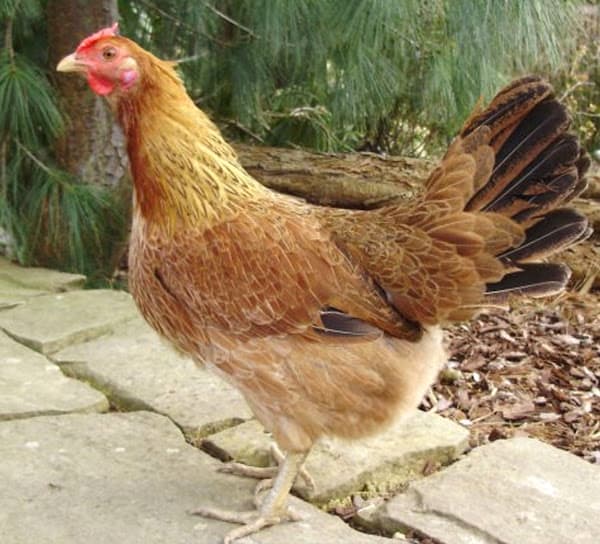
A breed valued for its hardiness, the Marsh Daisy hails from Lancashire in England and is rare, even in the UK – and in the US, it isn’t even recognized by the American Poultry Association.
Marsh Daisy chickens are excellent foragers, making them ideal for free ranging. They have a calm but active disposition, so many people find them a pleasure to keep. They are also strong fliers compared to many other breeds.
They are good mothers, and they can produce around 200-220 eggs a year. They attain a moderate weight, with roosters averaging around 6.5lbs and hens about 5.5lbs, making them a good choice for meat.
However, they are relatively slow to mature, so they might not be the best option if you need birds that will be ready for slaughter as quickly as possible.
7. Australorp
As can be guessed from the name, Australorps are an Australian breed of chicken – and the more perceptive may also ascertain that they are descended from British Orpington birds.
To create the Australorp, Orpingtons were crossed with various other breeds, including Rhode Island reds, Minorcas, white leghorns, Langshans and possibly Plymouth rocks – and the resulting chickens became famous for their prodigious egg-laying feats.
In general, Australorp hens will easily produce 250 eggs a year – but the all-time record was 364 eggs laid by a single hen in a 365-day period.
It’s easy to understand why these chickens are sought after as laying hens, but their large size also makes them suitable for eating. For this reason, they are an excellent choice of dual-purpose chicken for those who nevertheless prioritize eggs over meat.
8. Rhode Island Red
An American breed that was created in Rhode Island and neighboring Massachusetts – and now the state bird of Rhode Island – the Rhode Island red was created by combining the leghorn of Italy with various breeds of East Asian provenance.
Chickens of this breed have a striking appearance with a rich and lustrous plumage along with a bright red comb, wattles and earlobes.
They were created specifically as a dual-purpose breed and are capable of producing 200-300 eggs a year during their prime egg-laying years.
Rhode Island reds are also known for their particularly flavorsome meat, and adults can weigh 6.5-8.5lbs.
A good forager, these are one of the most popular breeds among American backyard chicken keepers.
9. Dominique
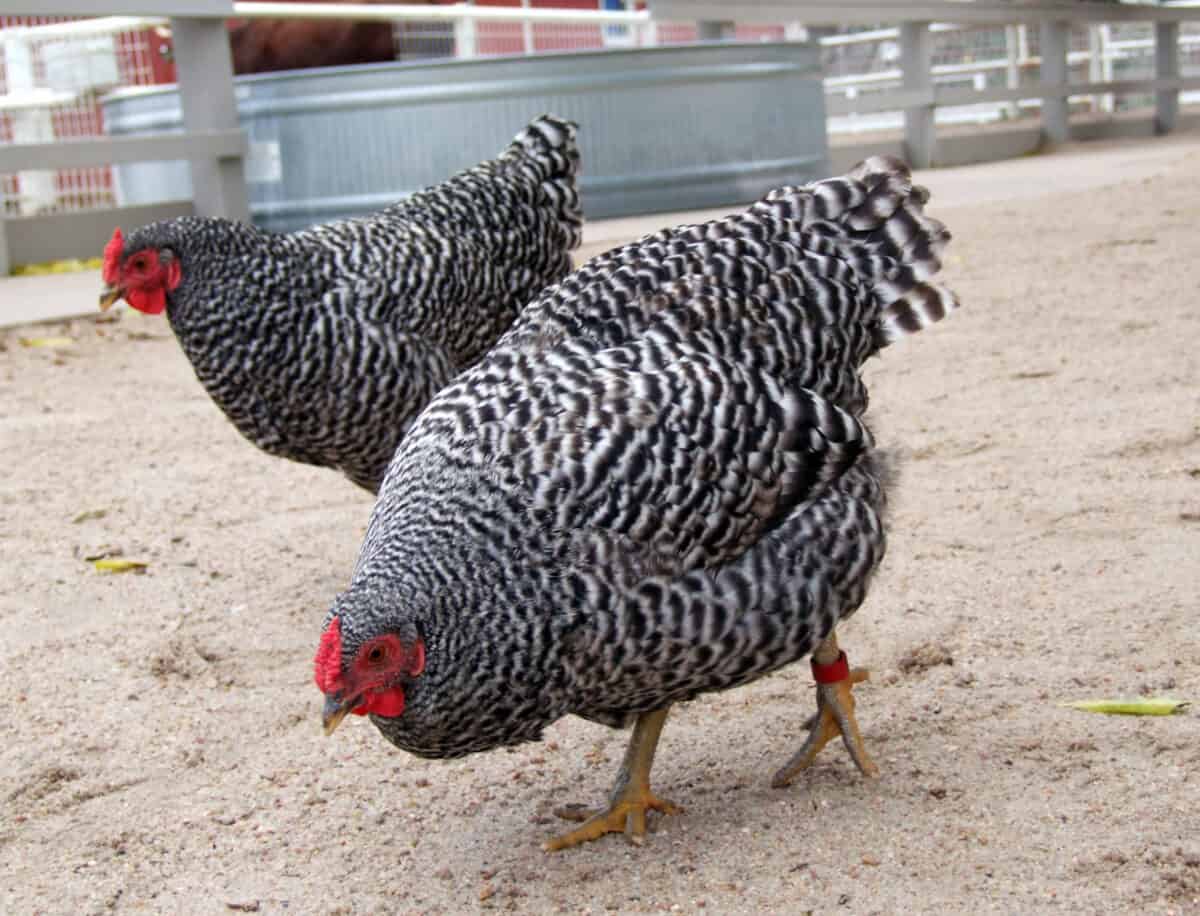
The Dominique is known for being America’s oldest chicken breed, and with its dark and light barred plumage and bright red comb, wattles and earlobe, has an attractive, highly distinctive appearance.
The origins of this breed are unknown, but it is thought they are descended from birds brought to North America from southern England in the 17th century.
In any case, they were already well established by the mid-18th century, and the breed was included in the first edition of the American Standard of Perfection in 1874.
They are a popular dual-purpose breed that are particularly good egg layers, producing around 200 eggs per year. An average-sized chicken weighing around 5-7lbs, they are also commonly raised for their meat.
In addition, they are an extremely winter-hardy breed, and their combs are less susceptible to frostbite than in many other breeds, which makes them especially popular among chicken keepers in regions with colder climates.
10. Jersey Giant
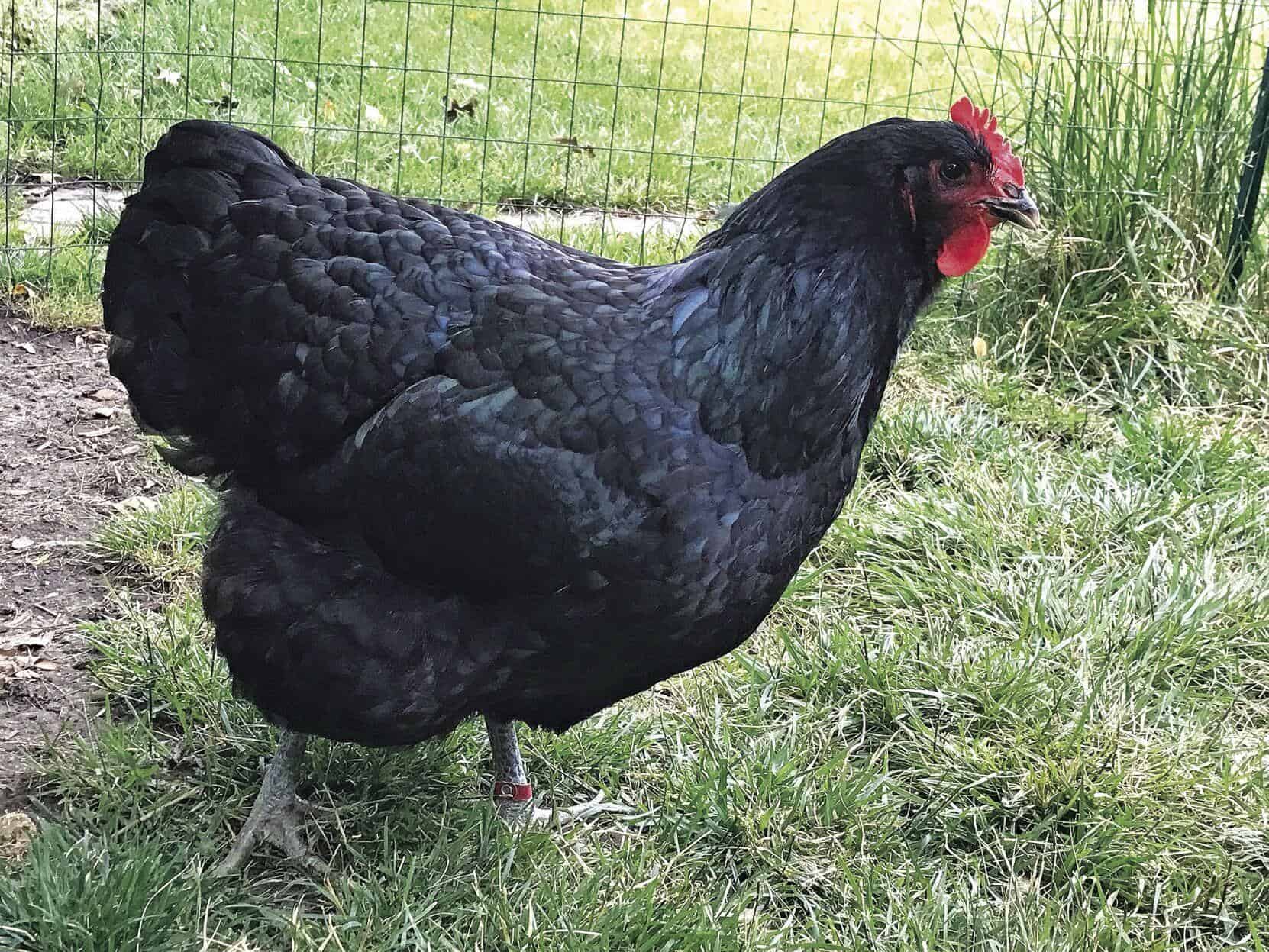
Among the world’s largest breeds of chicken, the Jersey giant was created in New Jersey in the late 19th century by crossing Javas, Langshans and brahmas. The breed was included in the American Standard of Perfection in 1922.
Jersey giants are known for being a calm and docile breed that is relatively resistant to cold weather.
Due to their size, they are an obvious meat bird, but they also perform well in terms of laying. They can produce up to 200 eggs a year and continue laying into winter, which makes them a popular dual-purpose breed.
Chickens of this breed are slow to mature and require more feed than more moderately sized birds. However, despite these downsides, they remain a popular breed among chicken keepers due to their obvious advantages.
11. Buckeye
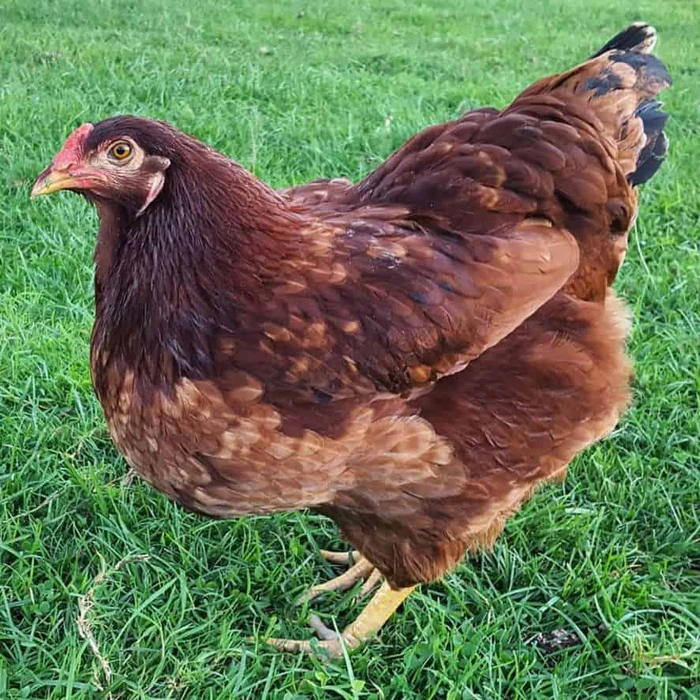
The buckeye was originally created in 1896 in Ohio and has the distinction of being the only American breed known to have been created by a woman.
It is descended from a mixture of Plymouth rocks, cochins and game birds, and the intention of the breeder was to create a dual-purpose breed that was hardy enough to survive the harsh winters of the Midwest while continuing to lay eggs.
Roosters of this species weigh around 9lbs while hens weigh around 6.5lbs – and since they mature quickly, it is a highly suitable breed to keep for its meat. As a chicken that can produce 150-200 eggs per year, it is also valued as a layer.
Buckeyes are stocky birds with pea combs, making them a good choice for colder climates, as was the intention when the breed was created.
They are usually docile – although roosters can occasionally become aggressive, perhaps due to their game bird heritage – and they are good foragers, all of which makes them an excellent option for backyard chicken keepers.
12. Java
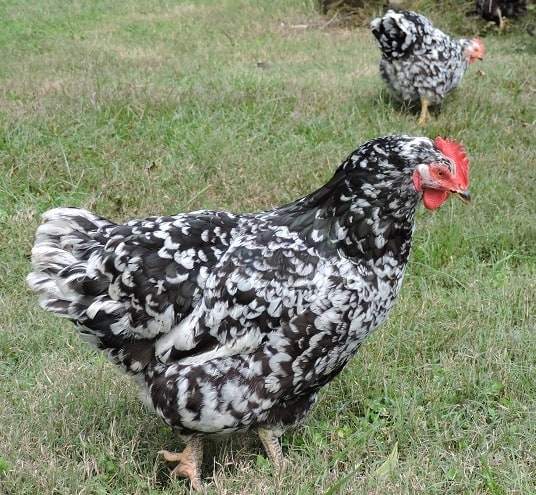
Although named after the Indonesian island of Java, this is an American breed descended from unknown Asian stock.
After the Dominique, it is the second oldest American breed and has contributed to the creation of many other breeds, including the Jersey giant, the Rhode Island red and the Plymouth rock.
It is a productive layer and although slow to mature, it attains a good weight, with roosters weighing around 9.5lbs and hens coming in at 6.5-7.5lbs, so it’s a solid choice for both uses.
It is a docile breed, a good forager and is cold-hardy– all characteristics that make it an attractive breed for backyard keepers. It is also known to go broody, which makes it a good choice for those wanting to raise chicks.
However, despite these obvious advantages, it is now rare and close to extinction, and its conservation status is listed as “critical” – which is all the more reason to acquire some for your flock and help save the breed.
Some wonderful breeds that can provide both eggs and meat
As we’ve seen, many wonderful chicken breeds exist that can provide plenty of eggs for you throughout the year but that also grow to a big enough size for you to eat when you need meat.
Choosing the best breed for you will depend on factors such as your local climate and whether your chickens are free-ranging or kept in a run. However, whatever requirements you have, you’re sure to be able to find a dual-purpose breed that fits the bill.

